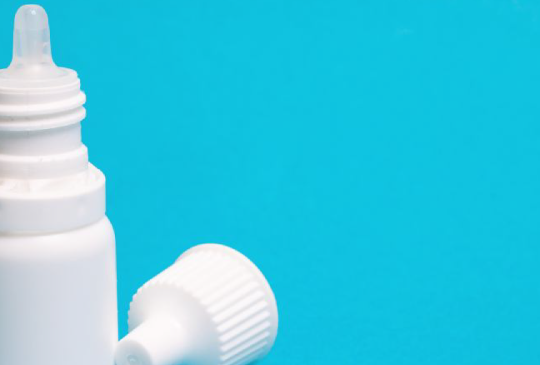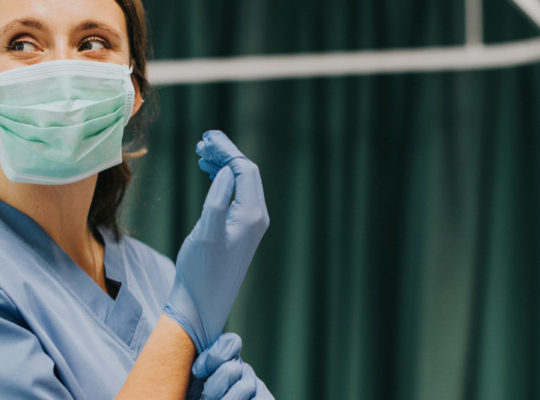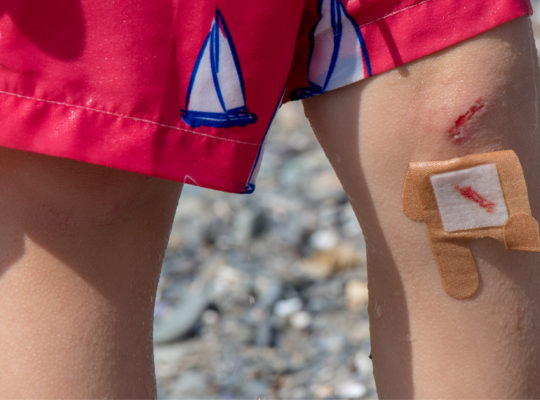Band-Aids are a go-to solution for scrapes and cuts, but have you ever wondered why those tiny holes dot their surface? It’s a detail many overlook, yet it serves an important purpose. Understanding this feature could change how you see a product that’s been in every household for generations.
One common frustration is the discomfort or poor healing caused by wound coverings that trap moisture or make injuries feel hot and sticky. This often leaves people questioning if a Band-Aid can actually help wounds breathe and heal better.
Here’s an interesting fact: Band-Aids have been around since 1920, and their design has evolved significantly. Those small perforations are far from decorative; they play a specific role in wound care.
In this guide, we’ll reveal why Band-Aids have holes and how this simple design feature can make a big difference in wound healing and comfort.
Why Do Band-Aids Have Holes In Them?
Well, this is not a fault or accident, this is a very purposeful design that has been engineered over years in order to find the best way to help wounds heal well, and quickly.
Part of this is to actually allow some air through the bandage, to allow an open wound to breathe and heal properly.
The allowance of airflow is also beneficial to preventing infections as they don’t muster under the vacuum environment a band-aid without perforations would create.
Moreover, this also allows for the moisture underneath the band-aid to naturally evaporate which it wouldn’t do below the surface.
The ideal situation for a wound to heal in is a dry and warm environment and by having perforations on the surface of the band-aid this is much more possible.
In terms of drying, not only does this allow natural moisture from the skin to evaporate, but if a wound is discharging pus or blood then the perforations also allow this to naturally dry, rather than making the wound moist, which we don’t want.
You may also notice that some flexible bandages or plasters, especially band-aid brand bandages, that the non-adhesive and soft material on the band-aid that covers the wound also have an even smaller and thinner perforated plastic layer, often referred to as ‘Tefla’.
Should You Expose A Wound To The Air?
One large misconception even held by certain medical professionals, is that a wound should be exposed to the air in order to heal the fastest.
Based on what we have learned this is actually not true, and most medical professionals now actually suggest that the best way to get a wound to heal quickly is to leave it dressed, and actively limit its exposure to the open air.
Once your wound has actually stopped bleeding and the wound has been cleaned the recourse is to apply a bandage, rather than letting it dry as previously understood.
Air can dry a wound out, many thought that this would lead to the wound healing better, but this actually promotes cell death rather than healing, which we don’t want.
Covering a wound, on the other hand, actually maintains the natural moisture that helps keep cells alive.
That isn’t to say that we want our wounds to be wet, we don’t, as this can cause all sorts of infections like gangrene we don’t want.
But natural moisture from the skin is actually conducive to cell regrowth, which is why band-aids have perforated surfaces, or holes in them.
Finally, a wound that heals in a moist environment is actually less likely to leave a scar due to the cell health being maintained.
In fact, an exposed cut is actually at more risk of infection due to being exposed to the air.
There is debris and dirt that floats in the air and is not harmful to breathe in or be around but is small enough to affect the wound on a microbial level.
Put simply, an exposed wound can collect dirt from the air and become infected, whereas a covered wound is protected from infection.
As a rule of thumb a wound requires an environment that has some natural moisture and is warm.
Another reason why dressing your wound is important is because it maintains the temperature of your skin and actually warms the wound up.
This is super important as it stimulates blood flow by being warm. This helps cells grow back better.
When a wound is exposed to the air it actually becomes colder in most circumstances, as well as dry.
The cooler the temperature, the slower the cells regenerate and the slower your wound heals, because a cold wound has less blood being circulated around it.
Are Band-Aids And Bandages The Same Thing?
Band-Aid is actually a brand name for plasters. The band-aid has dominated the domestic bandage industry for a long time in the US, but isn’t so common in other parts of the world.
In EUrope they generally don’t have one brand of bandage, in the Uk they call a bandage a plaster like some Americans and Canadians do.
As the band-aid is a brand, a non-branded bandage is often nearly exactly the same. A bandage that has another brand on it will likely have a slightly different design though. But other bandages you can find in your grocery store aren’t necessarily worse.
Band-Aid was one of the first products produced by Johnson and Johnson, now a household brand, all the way back in 1886 when they started producing gauzes.
In the next year Johnson and Johson would start to produce the first commercially available first aid kits that you could buy for the home.
In these kits they contained the gauze that was sold by Johnson and Johnson at the time.
Fast forward to 1920 when the fabric and medical industry really came on leaps and bounds. A cotton buyer, Earle Dickinson, then invented the adhesive bandage we know today as a ‘band-aid’.
He actually developed this for a totally normal reason, because his wife kept cutting herself in the kitchen and he wanted a quick fix so his wife could dress her own wounds as they occurred.
Dickinson would go on to demonstrate this to the bosses at Johnson and Johnson who then bought the product up and combined it with their existing gauze material.
They hit the shelves a year later in 1927 under the name band-aid, and this was before most Americans were aware of domestic medical treatments like dressing wounds.
As a result of most Americans being made aware of the domestic adhesive bandage through the name Band-Aid most Americans only know this as a Band-Aid, but for international purposes most medical professionals will use other terms so everyone can understand.
It was actually around this time in 1924 when perforations would be introduced to the band-aid and other adhesive dressings.
Final Thoughts
What should be clear in the article is that the best environment for a wound is a covered, slightly moist, and warm environment. This encourages cell regrowth best, and the band-aid creates this environment well.
The perforations serve a specific purpose of allowing a wound to breathe, the allow air in and out so that the moisture under the band-aid can evaporate and maintain the right amount of moisture, while they also allow air in so that blood and pus can dry properly.
It’s actually no longer understood that a wound should be exposed to the open air.
FAQs
Do All Band-Aids Have Holes?
Not all Band-Aids have holes. Waterproof and hydrocolloid bandages, for example, are designed without perforations to create a moisture-sealed environment. These specialized bandages protect wounds from water and external elements, ensuring a more controlled healing process in cases where maintaining moisture is advantageous.
Do the Holes Help Wounds Heal Faster?
Yes, the holes in Band-Aids promote faster healing by allowing airflow to the wound. This ventilation keeps the wound dry, reducing infection risks and supporting natural scab formation. For minor cuts, this dry environment is essential for quicker recovery and healthier skin regeneration.
Can Bacteria Enter Through the Holes?
No, bacteria cannot enter through the holes in Band-Aids because the perforations are too small. These holes are designed to ensure airflow while maintaining a protective barrier that prevents harmful microorganisms or particles from contaminating the wound.
Do Perforated Band-Aids Work Better Than Non-Perforated Ones?
For minor wounds, perforated Band-Aids generally work better by providing ventilation that helps wounds dry and heal faster. Non-perforated bandages, however, are ideal for cases requiring moisture retention, such as treating blisters or burns, where a moist environment supports healing.

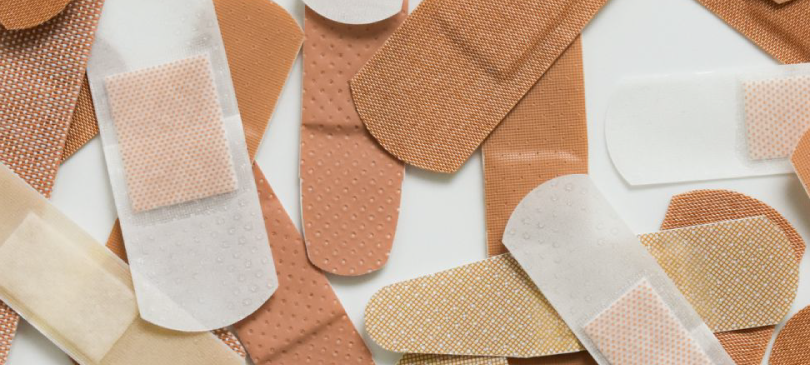
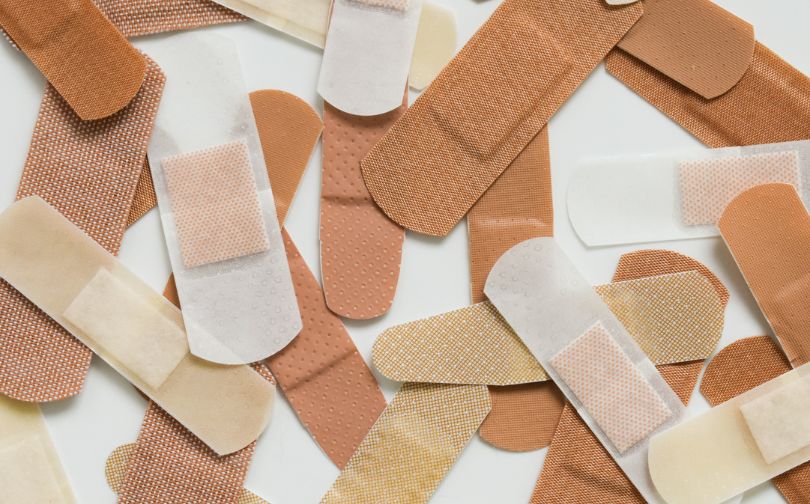
![Why Do Band-Aids Have Holes [What You Need To Know]](https://www.e-firstaidsupplies.com/blog/wp-content/uploads/2023/05/Why-Do-Band-Aids-Have-Holes-What-You-Need-To-Know-1-1024x683.webp)
